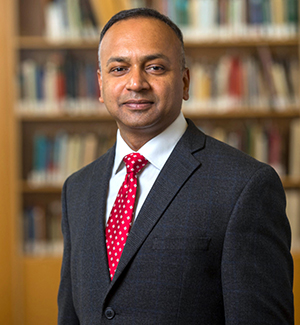 Two years ago, Assistant Professor Vikas Srivastava joined the Brown faculty and had the opportunity to develop a new graduate course, which he named Analytical Modeling for Biomechanical and Biomedical Systems. In it, he introduced an educational portion on the modeling of infectious disease spread and dynamics. A unique subset of problems solved in class now feels forebodingly familiar to those engineering graduate students who studied the concept of “flattening the curve” before it became a household catchphrase.
Two years ago, Assistant Professor Vikas Srivastava joined the Brown faculty and had the opportunity to develop a new graduate course, which he named Analytical Modeling for Biomechanical and Biomedical Systems. In it, he introduced an educational portion on the modeling of infectious disease spread and dynamics. A unique subset of problems solved in class now feels forebodingly familiar to those engineering graduate students who studied the concept of “flattening the curve” before it became a household catchphrase.
As a corporate engineer-turned-professor, Vikas Srivastava has specific goals in mind when it comes to what aspiring engineers and future researchers need to know. When he first arrived on campus in 2018, one of his first opportunities came in the form of creating a new biomedical engineering graduate level course, and formulating the topics that course would cover. It was important to him that the material be complementary to, and not already captured some other way under the existing engineering course curriculum. One topic that caught his eye was the idea of infectious disease modeling.
“In the infectious disease community, there is a widely accepted notion that it is just a matter of time before a new pandemic occurs,” he said. “I was thinking of what key and important problems this class could look at from an engineering point of view. And I was quite fascinated with the spread of infectious disease, and thought this would be something interesting for me to learn about, and teach my students.” At the time, he had no idea how ahead of the curve he was.
“I’m not an infectious disease researcher,” Srivastava said. “In fact, my research explores mechanics of materials for energy and biomedical applications, with no direct emphasis on infectious disease. Until now. But I know and enjoy mathematical and physical modeling. And I look for opportunities where these approaches can be applied.”
Srivastava estimates that about thirty percent of his course ENGN 2911R specifically involves discussion and modeling of infectious disease dynamics, although a handful of students indicated that was indeed one of the reasons for choosing the class. Second-year biomedical engineering Ph.D. student Kiara Lee said, “I had heard great things about the course, including about the infectious disease modeling, which I was very excited about because of my dual interests in global public health and engineering. At the same time as taking this course, I was also taking Introduction to Epidemiology in the School of Public Health, and the two courses did end up discussing similar topics, but from different lenses.”